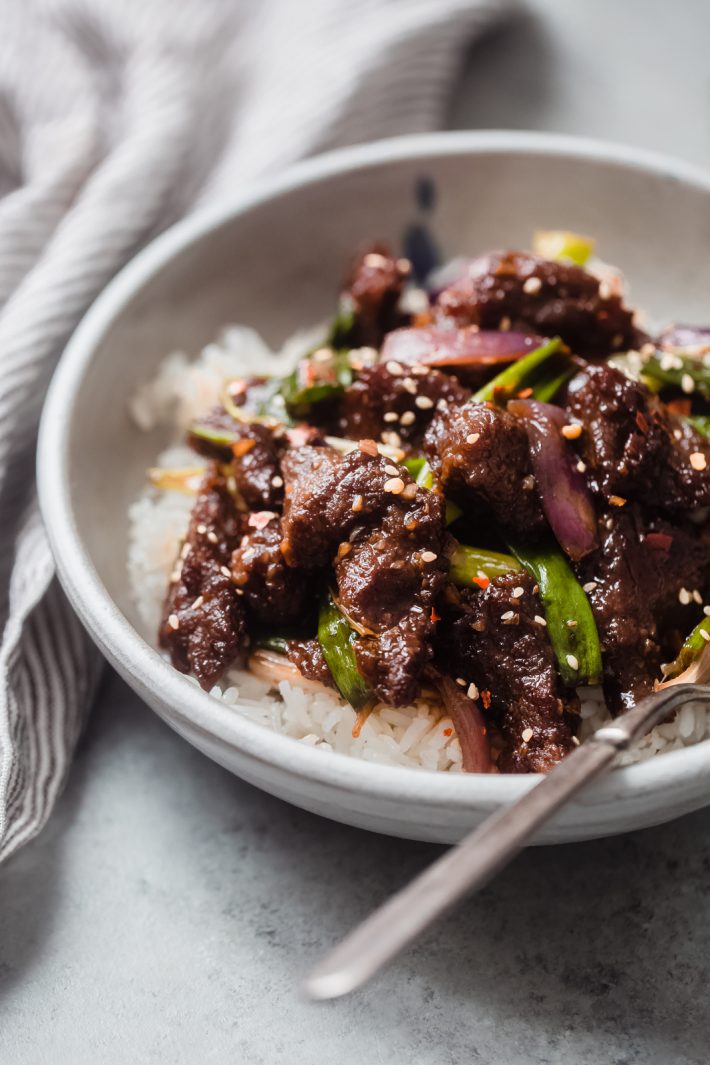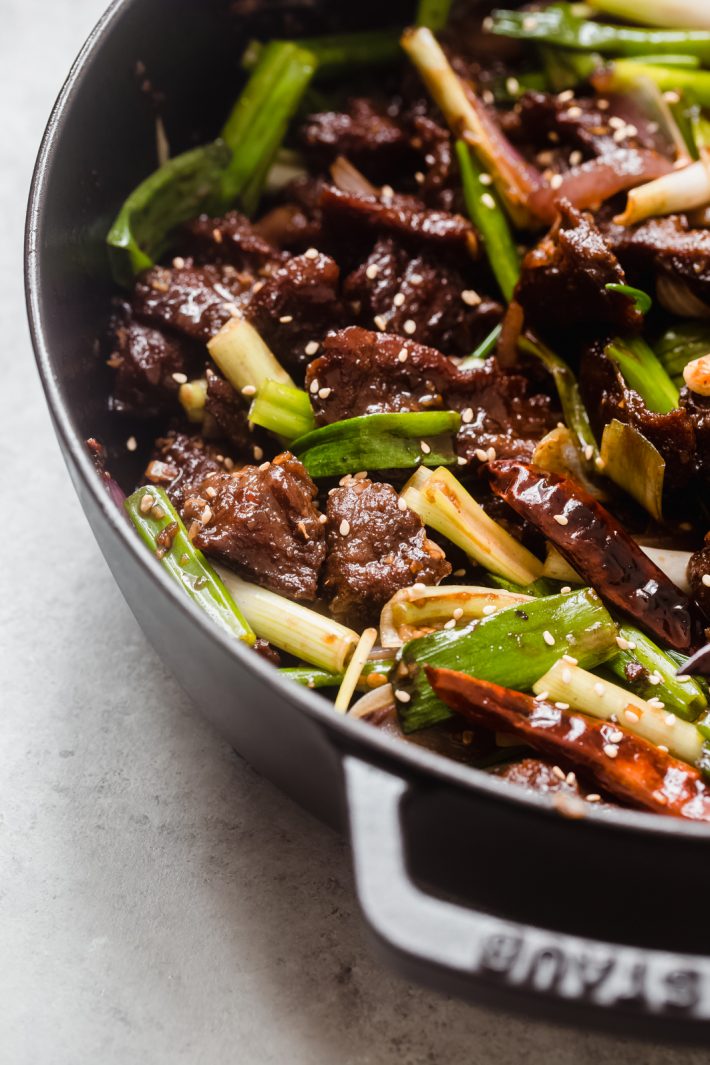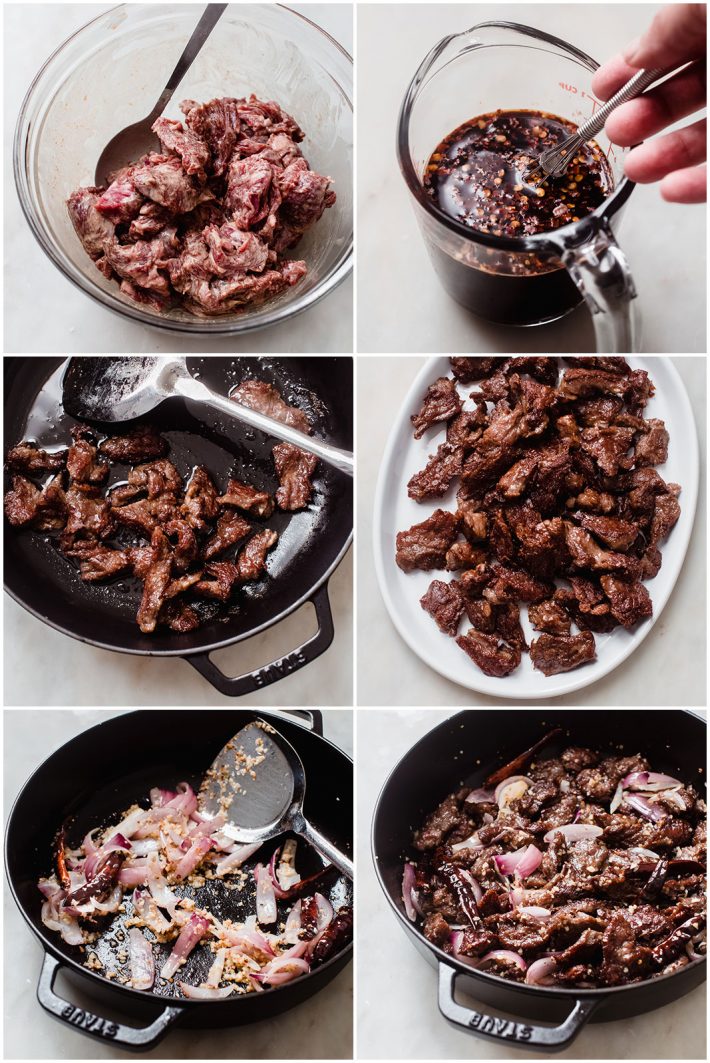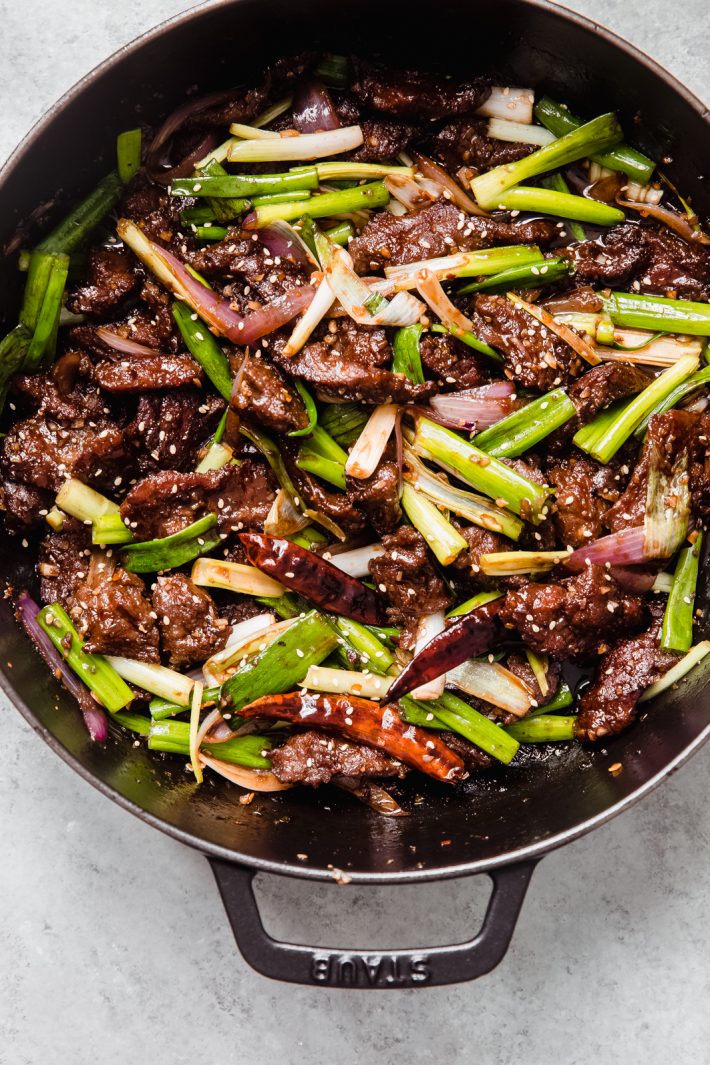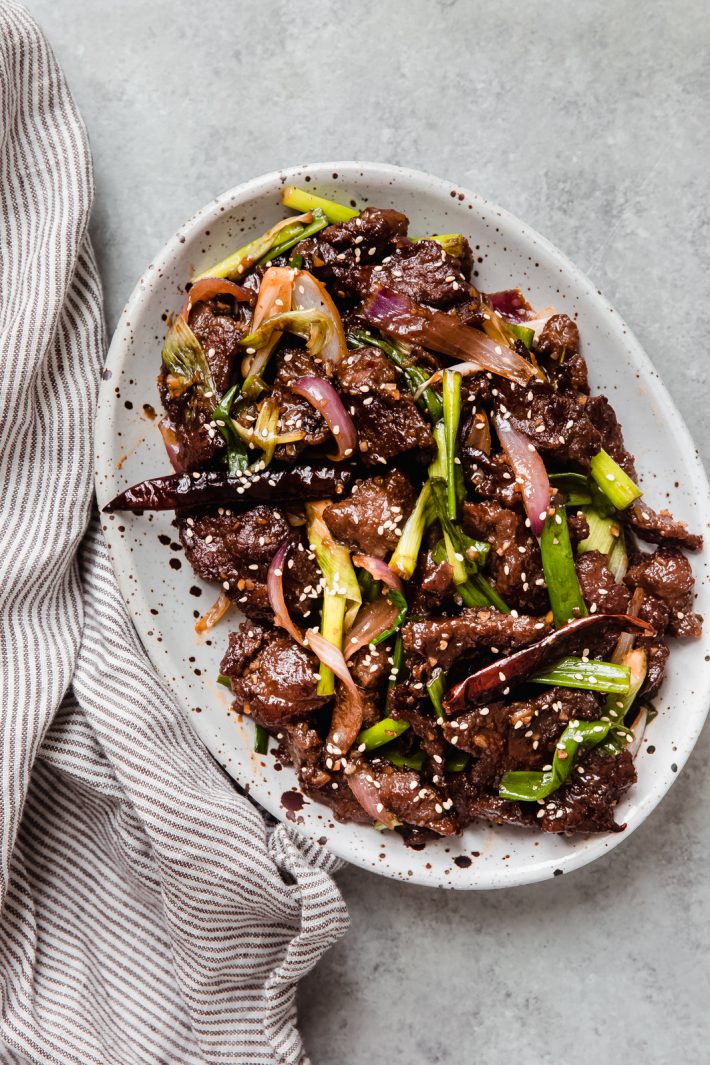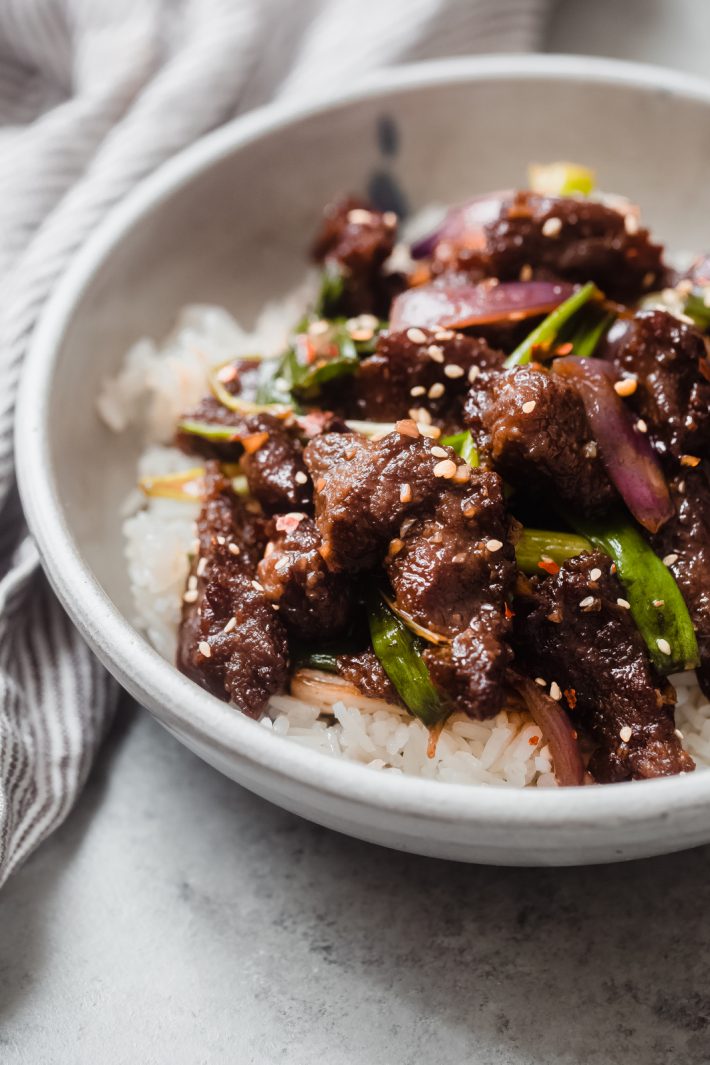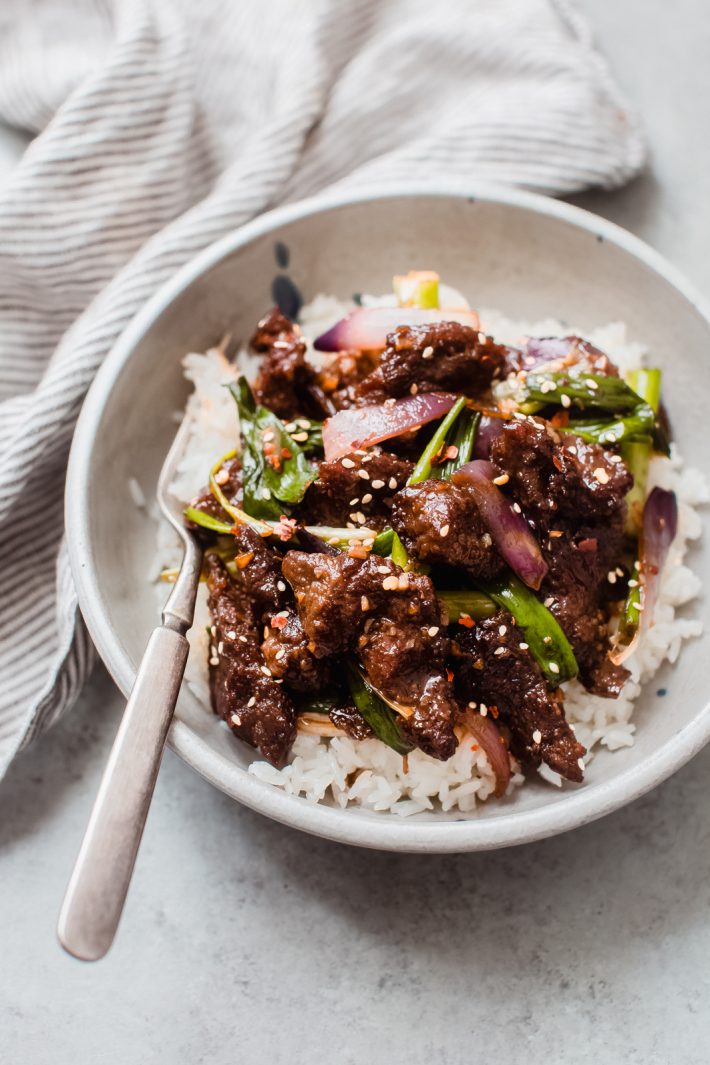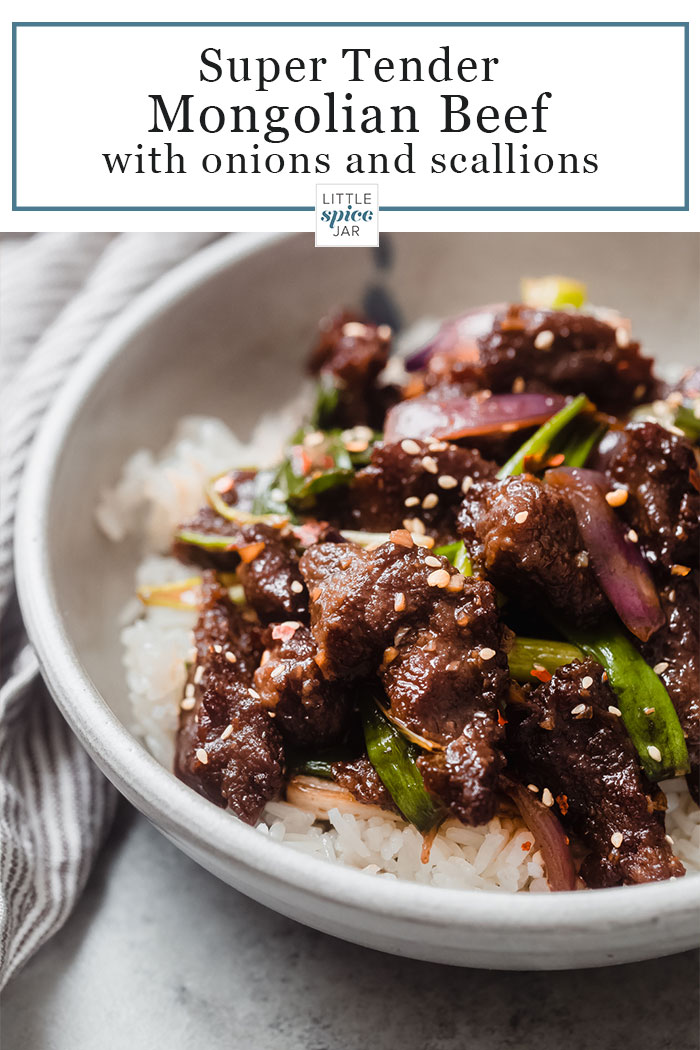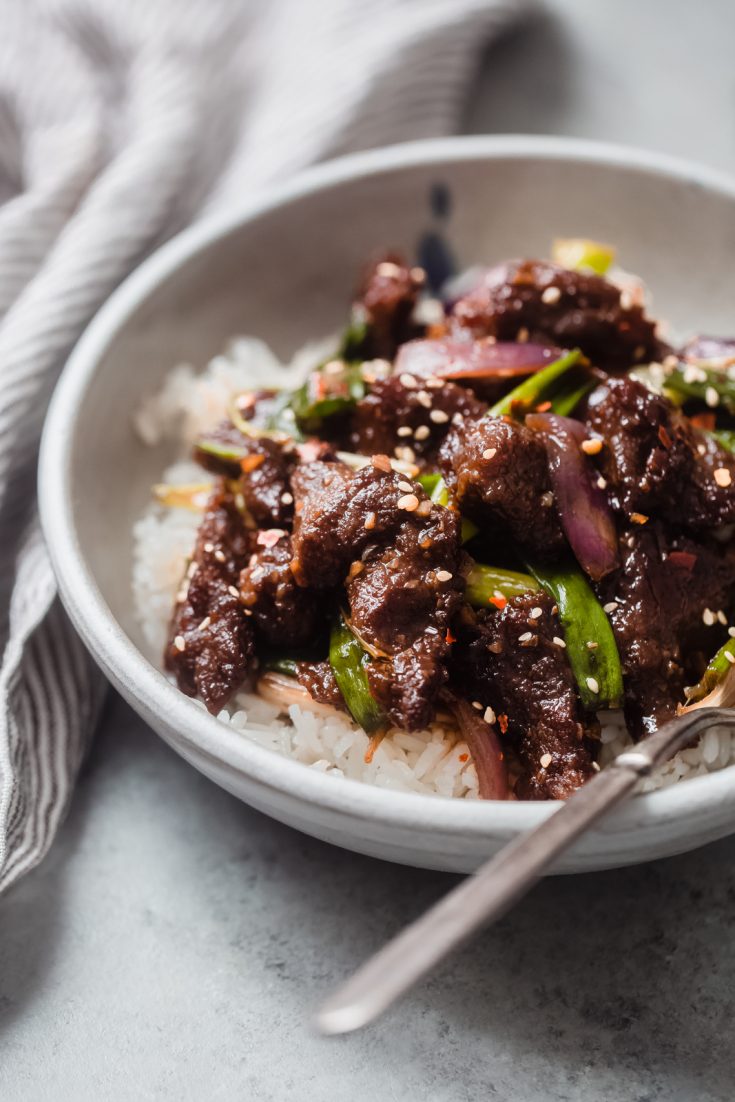Homemade Mongolian Beef loaded with tender garlic-scented beef, a sweet and salty brown sauce, and tons of crisp scallions for color and crunch. I serve it up on a bed of fluffy jasmine rice, and this recipe has quickly become a weekly staple around here! One night I was making Mongolian Beef for dinner with the two huge bunches of scallions that our grocery store sent in my weekly grocery pick up. Did I order two, I don’t think so? But did I put them to good use? I sure did. I just happen to share a quick time-lapse on Instagram as I was making this and so many people all but demanded this recipe. And I’m all here for it!
This easy Mongolian Beef recipe is modeled after my favorite Chinese take out place as well as my Mongolian Beef meatballs. They make the best version, loaded with tons of crisp scallions and even thin onion slices to help make this meal more flavorful.
Beef: There are several different cuts of beef that you can use. Be sure to cut against the grain and make equal pieces so that they cook up in roughly the same amount of time. Low sodium soy sauce: adds umami to the beef. Cornstarch: Cornstarch is used on the beef so that it gives it some texture when we sear it in a hot pan. It also helps lock in the natural juices, giving you a juicy piece of meat when you bite into it. Minced garlic: We sauté the fresh garlic in the oil before we put the stir fry together. Baking soda: acts as a natural tenderizer in this recipe. It is my secret ingredient for take-out recipes as it gives the beef (or chicken) a tender texture even if you marinate it for a short 15-20 minutes. Seasonings: We’re seasoning the beef with garlic powder and white pepper to help flavor it before we sear it off in the hot oil. Onions: These add both color and crunch. You could use white or yellow onions as well, but I prefer red onions because they also add a bit of color. Dried red chilies: The chilies are optional however, they do give it more of that restaurant-style flavor. I purchased mine in bulk from an Indian grocery store; you can also purchase them here. These peppers are mild and used more so for flavor and color than anything else. Scallions: Be sure to trim the scallions and chop them into 4-5 pieces. If the whites on scallions are incredibly thick, I just slice those down the center as well.
What kind of beef cuts can I use to make Mongolian Beef?
I like to use a flank or skirt steak for this recipe. Both of these steaks produced similar results. Since these types of steaks contain tough muscles, it’s crucial to allow the meat to marinate for at least 15 minutes before cooking and to cut the meat against the grain for best results. I usually let it go for 1-2 hours and find that the steak bites just melt in your mouth at that point!
How to make Mongolian Beef extra tender:
When you’re slicing the beef for this recipe, I suggest cutting against the grain. I also like to do so on the biased so that my knife is at a 45º angle when cutting. This increases the surface area of the slice, and when we marinate it in the baking soda mixture, it leaves a more tender piece of steak!
What’s in the sauce?
The sauce is just equal parts water, low sodium soy sauce, brown sugar, freshly grated ginger, a bit of salt, and a tablespoon of hoisin sauce to add all the other flavors.
The science behind using baking soda to marinate Mongolian Beef:
The alkalinity of baking soda raises the pH of the meat, causing the proteins to move further apart, and that makes it more tender and easier for us to chew or bite into.
Use the right equipment: For this recipe, you can go one of two ways. You can either use a wok that retains heat well. Or you can use a cast-iron skillet or wide dutch oven. Then, I like to use a wide spatula designed for a wok to help flip the meat quickly. Get your pan screaming hot. A way to check if your pan is super hot is to sprinkle a little water into the skillet (make sure there isn’t any oil in the pan), and if it sizzles and evaporates right away, it’s ready for you to start cooking. Starting the meat in a hot pan allows for it to sear quickly on the outside while retaining all the juices on the inside. Also, you don’t want to cook the beef all the way through when searing, so it’s essential to have your pan hot enough to where it can quickly form an outer crust. Sear in batches. Instead of adding all the beef to the pan at once and causing it to steam rather than sear, I suggest browning the meat in batches. I prefer to do this in 3 batches. You shouldn’t need to thicken the sauce. Since we’re using a significant amount of cornstarch on the sliced steak, you shouldn’t need additional cornstarch to thicken the sauce. Adding it to a hot pan should cause it to sizzle, cling, and thicken onto the beef, leaving it with a nice sheen. If you find the sauce to still be thin for your liking, I suggest combining 1-2 teaspoons of cornstarch with a 1-2 teaspoon of water and adding it to the meat. However, in all my recipe testing, I didn’t need to thicken the sauce afterward.
Serving suggestions:
With roasted or steamed veggies Over quinoa With my 15 minute fried rice Over brown or jasmine rice Serve with freshly cooked egg noodles
Other Asian Recipes to try:
The Best Garlic Noodles Instant Pot Korean Beef Bowls 20 Minute Teriyaki Chicken Weeknight Dan Dan Noodles Thai Cashew Chicken Thai Basil Chicken Beef and Pepper Steak Stir Fry Vietnamese Chicken Sandwiches
[recipe]
